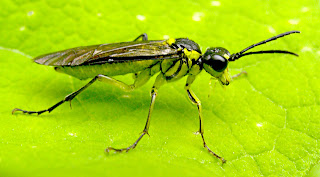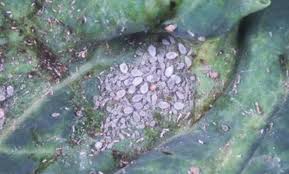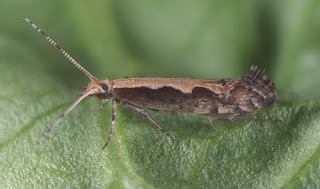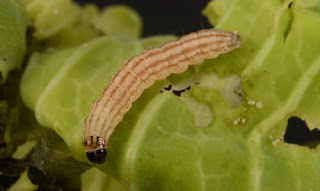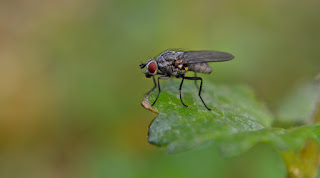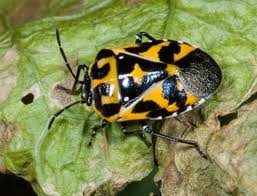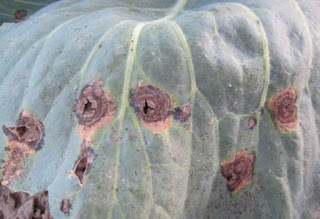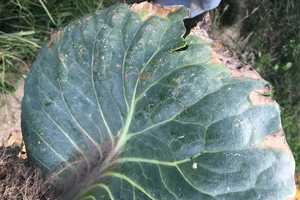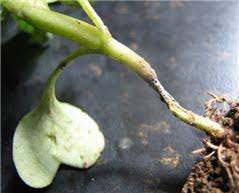Disease and Pest of Cole Crops
INSECT PESTS OF COLE CROPS
1. Mustard saw-fly
Scientific name: Althalia proxima klug.
The blackish Caterpillar that attack all cole crops and feeds on leaves of young seedling in the early stages. The infested leaves become curl and falls on the ground when touched.
Control measures
(i) Hand-picking of caterpillar, if the infestation is light and the number of the attacked plant is small, is the best method of controlling the larvae.
(ii) Spray the crop with malathion 50 EC @ 1000 ml/ha quinolphos 25 EC @ 625ml/ha. All this should be applied in about 600 to 700 liters of water per ha.
2. Mustard aphids
Scientific name: Lipaphis erysimi Davis.
A greenish-white small insects that attach cabbage and other cole crops when there is cloudy weather. They suck the sap from the plants. The affected leaves get curled and plants wither and die.
Control measures
1) Use tolerant varieties 2)Set up yellow stick trap to monitor aphid population. 3)Destroy the affected parts along with aphid population in the initial stage.4)Spray the crop with one of the following in the flowering stage; oxydemeton methyl, dimethoate@ 625 – 1000 ml per ha.
3. Diamond Black Moth
Scientific name : Plutella maculipennis Curt.
A small slender pale green caterpillar that feeds on leaves and make holes in them. The infested crops becomes unsuitable for marketing.
Control measures
This pest can effectively be controlled by spraying the crops with Malathion (Cythion-50 EC, Sumithion-50 EC, Folithion-1000) @ 2 ml per litre of water or Diochlorovos (Nuvan-1000, Vapona, Agrodan etc.) or Monocrotophos (Monocil, Nuvacron, Suphos etc.) @ 1 ml per litre of water.
4. Cabbage borer
Scientific name: Hellula undalis F.
A whitish brown caterpillar that mines the leaves and feed on shoots. Later it burrows into the stem or cabbage. The affected plants wilt, remain dwarf or may even die.
Control measures
(i) Removal of caterpillars when the plant is young is the best method for the control of larvae. (ii) This pest can effectively be controlled by spraying the crop with Phosphamidon (Demicron-100 E.C. Sumidon, Demidon etc.) @ 0.5 ml per litre of water or Methyl parathion (Metacid-50 EC, Methyl Parathion 50 EC, Chlorophs 50 EC or Monocrolophos (Nuracron Monocil, Suphos ctc.) @ 1 ml per litre of water.
5. Cabbage fly
Scientific name: Chrotophila (Hylemya) brassicae.
The maggots first attack the young rootlets and then burrow into the main root. The affected plants become yellow, will and sometimes they may die.
Control measures
Soil application of Aldrin or Heplachlor 5 percent @ 15 kg per acre or Heptaf 5 percent @ 10 kg per acre at the time of planting have been found effective in controlling this pest.
6. Painted bug
Scientific name : Bagada cruciferarum kirk.
The adult and nymph of this post suck the sap from the plants and retard their normal growth.
Control measures
1) Use tolerant varieties 2)Set up yellow stick trap to monitor aphid population. 3)Destroy the affected parts along with aphid population in the initial stage.4)Spray the crop with one of the following in the flowering stage; oxydemeton methyl, dimethoate@ 625 – 1000 ml per ha.
DISEASES OF COLE CROPS
1. Leaf spot and blight
C.O.: Alternaria brasicicola and A. brassicae.
Small dark-colored spots that spread rapidly to form circular lesions and concentric rings of dark conidiophores appear in humid weather due to which cauliflower develops brown discoloration and cabbage after harvest acquires a black mouldy appearance.
Control measures
(1) Hot water treatment of seeds at 50°C for 30 minutes helps to check the spread of this disease.
(ii) Spraying the crop with Zineb (Dithane Z-78) or Mancozeb (Dithane M-45) @ 2.5 gm per litre of water or Copper oxychloride (Blitox, Blucopp Phytolan, Cupravit etc.) @ 5 gm per litre of water at an interval of 10-15 03 according to incidence of disease is very effective to control this disease
2. Black rot
C.O.: Xanthomonus (Pseudomonas) capestris.
The margin of disease affected leaves turn yellow, vein become and vascular discoloration takes place in the main stem. Tavo becomes dark the main stem cauliflower heads are discolored. The seedling may die when attacked at a young stage.
Control measures
The disease can be controlled by seed treatment with hot water at 50°C or one percent mercuric chloride solution for half an hour before sowing and adopting crop rotation with non-cruciferous crops for three years.
3. Club rot
C.O.: Plasmodiophora brassicae
The roots of affected plant enlarge to form ‘Clubs’, secondary invasion by soft root bacteria follows forming materials toxic to plants. The foliage of affected plants wilts on sunny days and recovers toward evening.
Control measures
The seedlings at transplanting time should be treated with mercuric chloride @ 125 c.c. (about 113.4 gm) per 100 seedlings.
4. Damping off
C.O. : Phythium aphandidermatum Corticum solani Sclerotium rolfsi
It is a common problem in the nursery bed of vegetable crops. The affected plants fall down and die due to the shrinking of cortical tissue of hypocotyl.
Control measures



